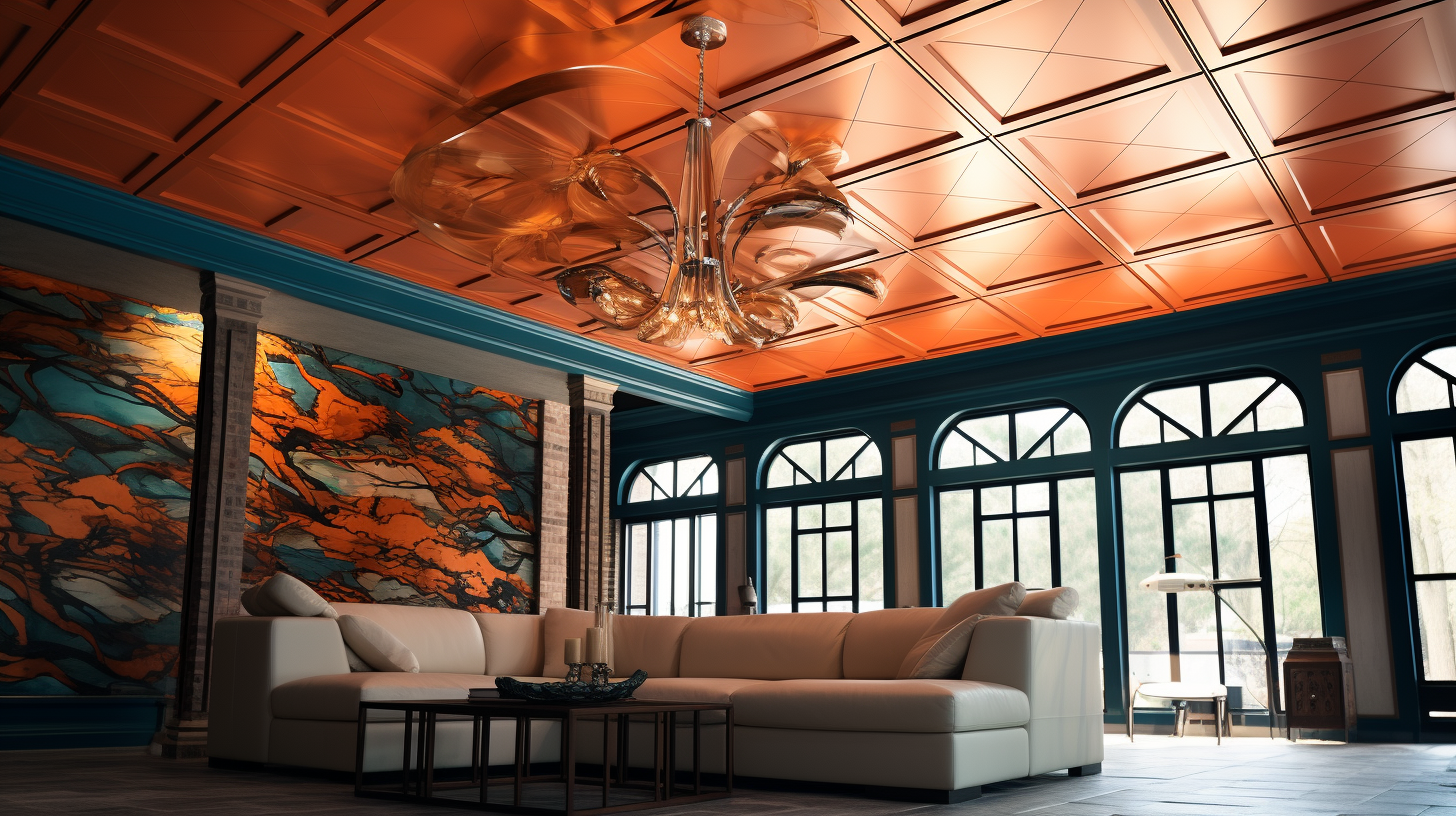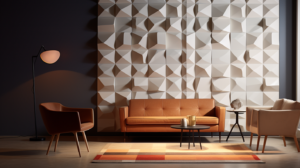Do ceiling tiles really keep the noise out, or are they just a decorative touch?
This question is at the heart of soundproofing discussions in modern architecture. While they may reduce echoes, true sound isolation requires a deeper look at acoustic solutions.
Let’s dive into the science of silence, examining how effective ceiling tiles are and what alternatives might better serve our quest for quiet.
Understanding Soundproofing

Soundproofing has become an essential consideration in the realm of architectural and interior design. But what exactly does it entail?
At its core, soundproofing is the methodological approach to reducing or preventing the transmission of sound from one part of a building to another.
This means that noises, whether they originate from the cacophony of the city streets or the lively chatter from the neighboring room, are kept at bay, ensuring a tranquil environment.
To delve deeper into the concept, one must first understand the nature of sound. Sound waves are produced when an object vibrates, creating a series of pressure changes in the surrounding medium, usually air.
These waves can travel far and wide, bouncing off surfaces or vibrating through them. When these waves hit a barrier, such as a wall or a ceiling, a few things can happen.
Some of the energy is reflected back, producing echoes. Some of it is absorbed by the material, converting to a negligible amount of heat.
The rest, unfortunately, can be transmitted through, leading to unwanted noise in the adjacent space.
Effective soundproofing strategies aim to either absorb these waves, reflect them, or prevent their transmission altogether.
Importance of Soundproofing in Homes and Offices

In the modern world, where urban spaces are increasingly cramped and offices are transitioning to open-floor plans, the importance of soundproofing has never been more pronounced.
In a corporate setting, the constant buzz of conversations, ringing phones, and machine noises can be detrimental to productivity.
It’s not just about the audible distraction; incessant noise can lead to increased stress levels, reduced concentration, and overall fatigue.
On the other hand, homes should be sanctuaries, places of rest and relaxation. But how can one relax when the neighbor’s television sounds as if it’s right in your living room?
Or when the honking of cars seems incessant? Effective soundproofing in homes ensures not just comfort, but privacy and peace of mind.
Where are Ceiling Tiles Usually Used?

When walking into commercial establishments or even some modern homes, one might often notice the uniform squares adorning the ceiling. These are ceiling tiles, and they serve a purpose beyond aesthetics.
Drop Ceilings
A drop ceiling is an architectural design where a secondary ceiling is suspended from the main structural one. Think of it as a ceiling below a ceiling.
The space in between often serves as a hideaway for unsightly elements like pipes, wires, and ducts. But the advantages don’t end there.
These ceilings also offer easy access for maintenance purposes. Instead of breaking through concrete or plaster during repair works, one can simply move a tile aside.
Moreover, in commercial settings, especially in large halls or office spaces, these ceilings help in temperature regulation and sometimes, in improving acoustics.
Now, when it comes to the material of choice for these tiles, mineral fiber often emerges as a favorite. But why? For starters, mineral fiber tiles are cost-effective.
When setting up large spaces, the costs can pile up, and every bit of savings helps. Additionally, they’re relatively easy to install, reducing labor costs and time.
From a safety perspective, mineral fiber is also non-combustible. This means, in the unfortunate event of a fire, these tiles won’t add fuel to the flames.
Furthermore, they come in a variety of textures and designs, offering flexibility in aesthetic choices.
Are Ceiling Tiles Soundproofing?
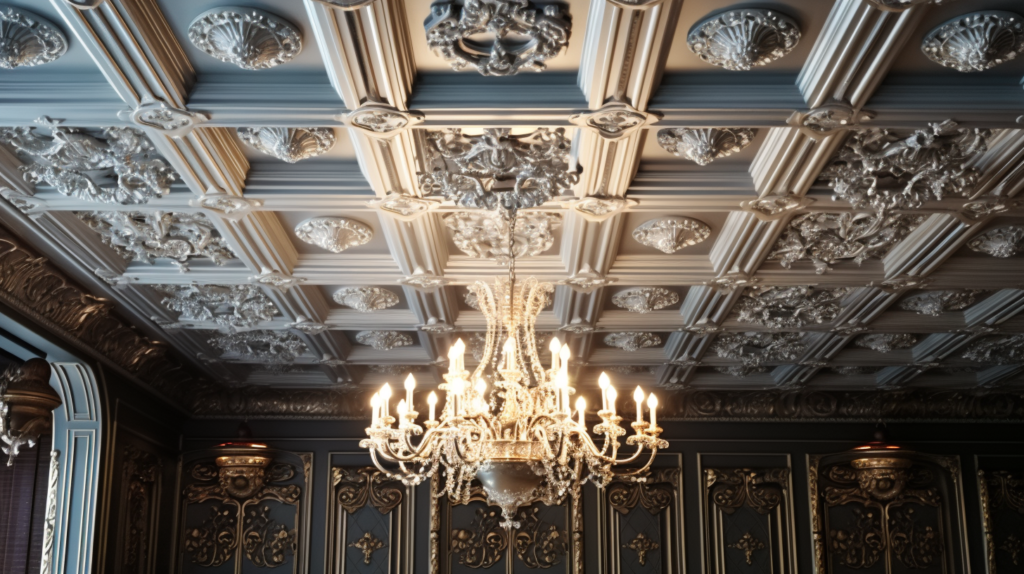
When considering mineral fiber tiles, there’s a common misconception that they provide effective soundproofing.
This belief often arises due to the noticeable reduction in echo within rooms that have them. However, a reduction in reverberation is not the same as soundproofing.
Mineral fiber tiles are inherently lightweight and porous. Their primary function is not to block sound but to absorb it.
When sound waves hit these tiles, they do get absorbed to a degree, minimizing the echoing effect within the room.
This absorption can make a room sound “quieter” but doesn’t prevent the transmission of sound from one room to another.
Effective soundproofing requires mass and density. The lightweight nature of mineral fiber tiles means they lack the necessary mass to block out sound effectively.
It’s essential to distinguish between sound absorption and soundproofing. Sound absorption deals with improving the acoustics within a room by reducing echoes and background noises.
In contrast, soundproofing aims to prevent external noises from entering a space and internal noises from escaping.
While mineral fiber tiles can enhance the acoustics within a room, they are not designed to block sound transmission between rooms or from external sources.
Ducts Hidden Inside Ceiling Tiles Are A Problem Too
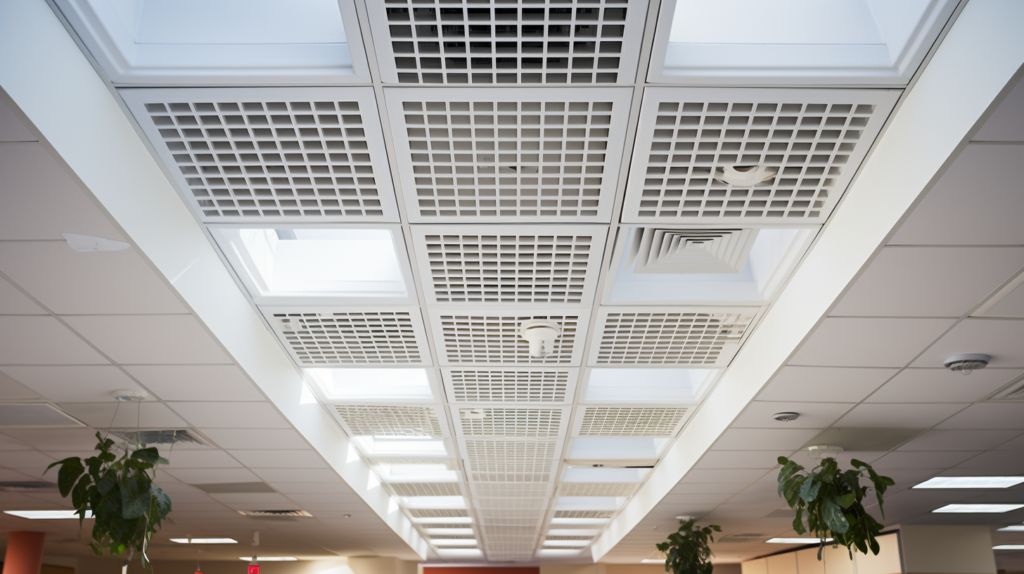
A significant challenge with drop ceilings, especially in commercial settings, is the extensive network of ducts, pipes, and wiring that often lies above them.
These elements can drastically compromise any potential soundproofing benefits.
In many buildings, the space above drop ceilings is a convenient location for HVAC systems, electrical conduits, and plumbing.
While this design is efficient for centralizing and hiding these systems, it poses a significant challenge for soundproofing.
Ducts, especially if not adequately insulated or sealed, can act as highways for sound. They can carry conversations, music, or other noises from one room and spread them across a building.
It’s a phenomenon often observed in office spaces where a conversation in one room can be unintentionally eavesdropped upon rooms away.
This transmission occurs because the ducts provide an unobstructed pathway for sound waves to travel, making them one of the most significant culprits in unwanted noise transmission in buildings with drop ceilings.
What Are The Effective Soundproofing Alternatives?
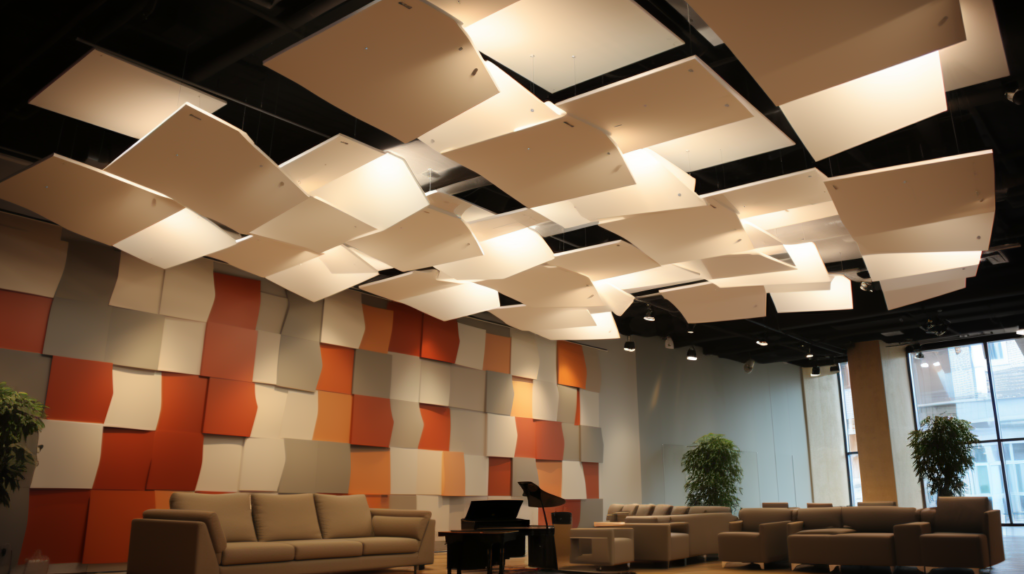
Merely understanding the limitations of traditional drop ceilings and mineral fiber tiles is not enough; it’s crucial to explore effective alternatives for those serious about achieving genuine soundproofing.
One of the most effective soundproofing strategies involves a multi-layered approach. Begin by installing soundproofing foam on ceilings.
This foam serves as a primary barrier, absorbing a significant amount of sound waves and preventing immediate reflections within a room.
Following this, the introduction of resilient channels is recommended. These metal channels are strategically designed to decouple the drywall from the ceiling structure.
By doing so, they interrupt the path of sound wave vibrations, preventing them from traveling through the building’s structure.
Finally, a layer of drywall, preferably thick, should be installed. Once in place, it’s vital to seal any gaps or seams with acoustic sealant, ensuring a continuous, uninterrupted barrier against sound.
A Simpler Alternative: Burton Acoustix Soundproofing Panels
For those who might find the comprehensive approach daunting or impractical, there’s a simpler solution.
Burton Acoustix offers soundproofing panels crafted from nitrile butadiene rubber.
Unlike traditional foam panels, these are denser and specifically designed to tackle both airborne sounds, such as conversations, and structure-borne sounds, like the vibrations from machinery or loud music.
Their versatility means they can be installed on walls or ceilings, providing a flexible solution for various spaces.
Conclusion
In conclusion, the journey towards achieving a serene and sound-managed environment, whether in a bustling office or a cozy home, requires more than just the application of mineral fiber ceiling tiles.
While these tiles contribute to reducing echoes and enhancing the acoustic quality within a room, they fall short of providing comprehensive soundproofing.
True sound isolation necessitates a combination of methods and materials that absorb, block, and break the transmission path of sound waves.
Implementing multi-layered construction with soundproofing foam, resilient channels, and dense drywall can significantly mitigate noise transfer.
However, for those seeking a more straightforward application, products like Burton Acoustix’s soundproofing panels present a viable alternative, offering a balance between efficacy and ease of installation.
Ultimately, the key to effective soundproofing lies in understanding the principles of sound behavior and applying the right combination of materials and construction techniques to create spaces that are as audibly comfortable as they are functionally aesthetic.
